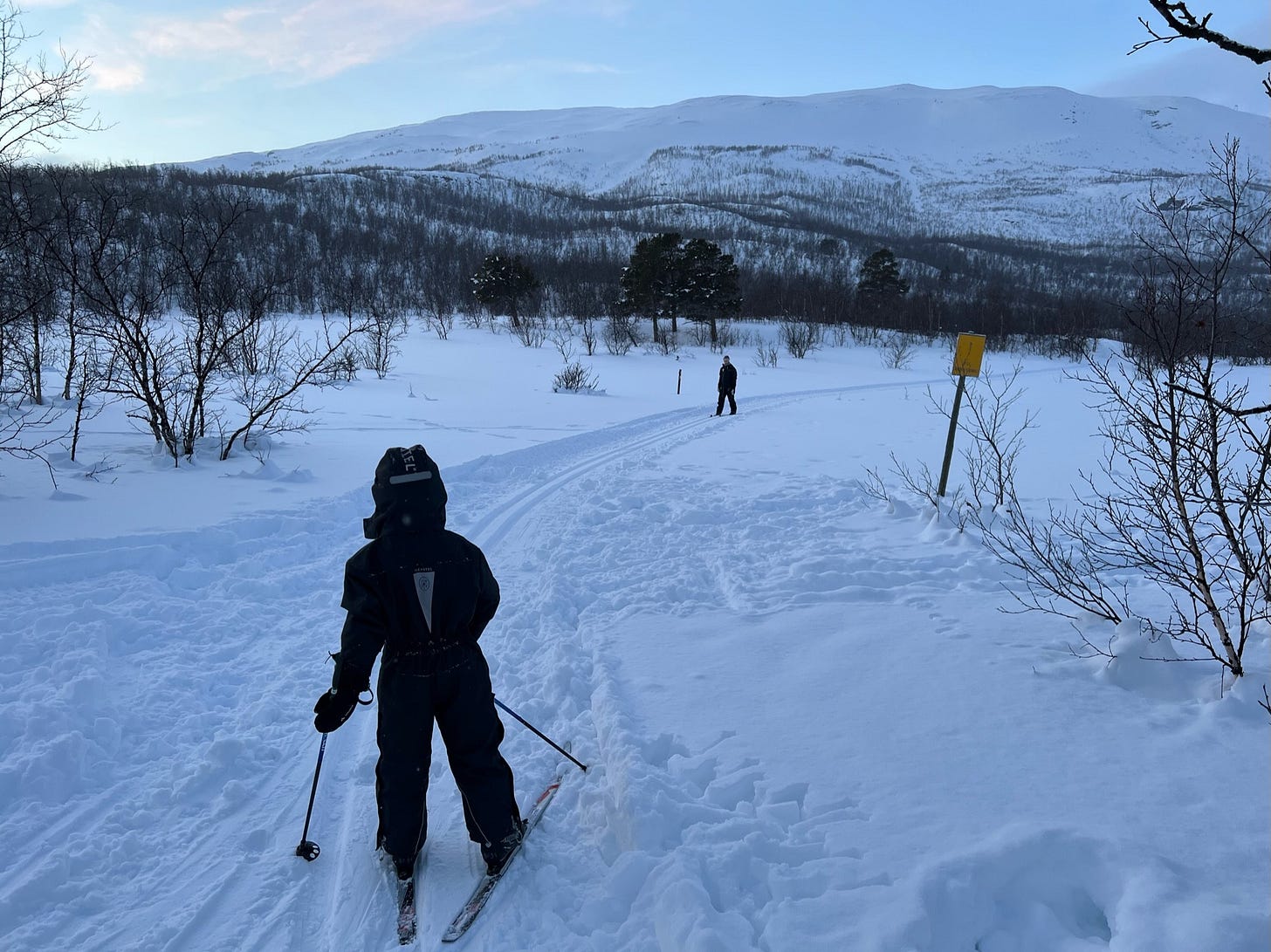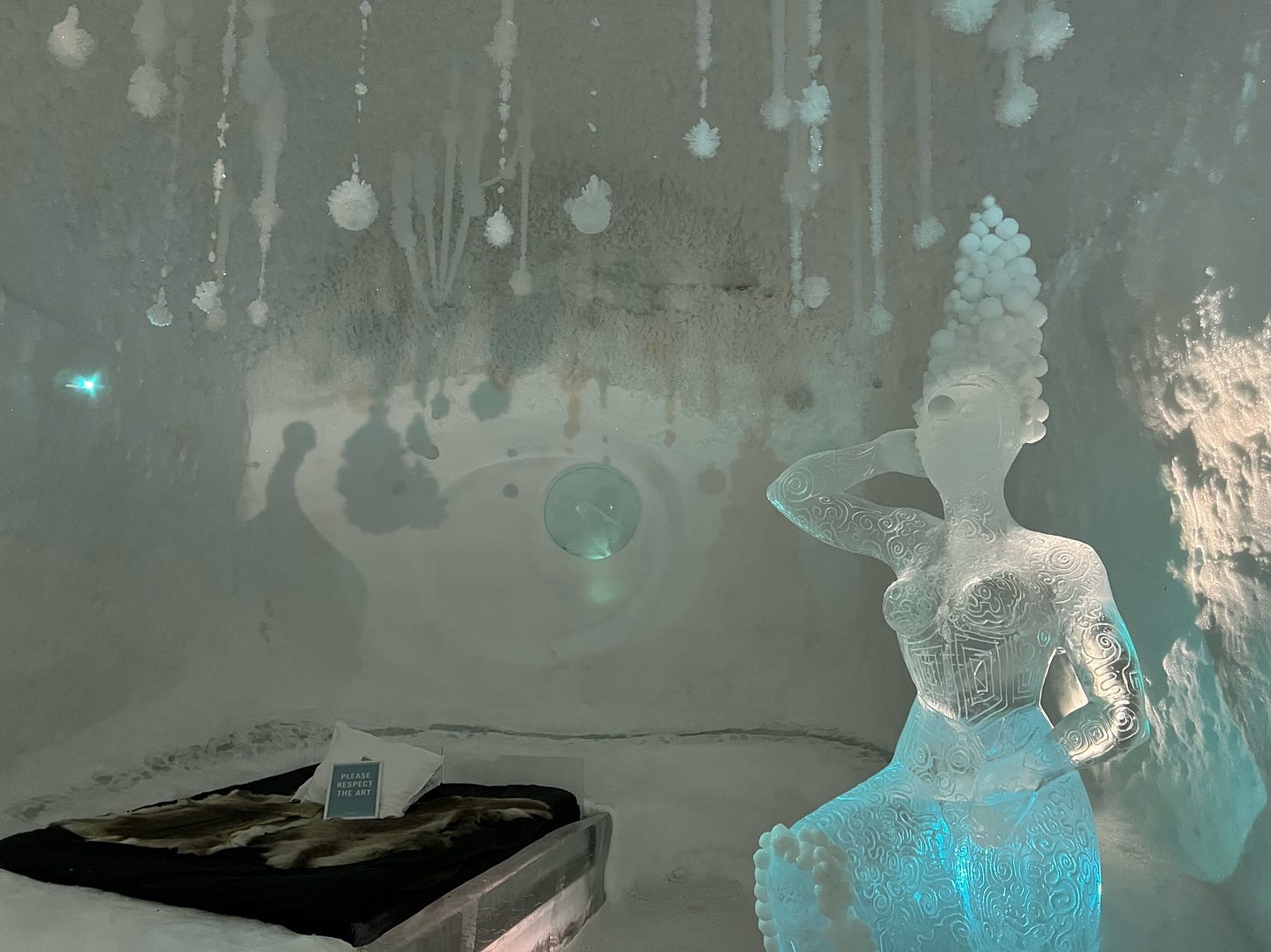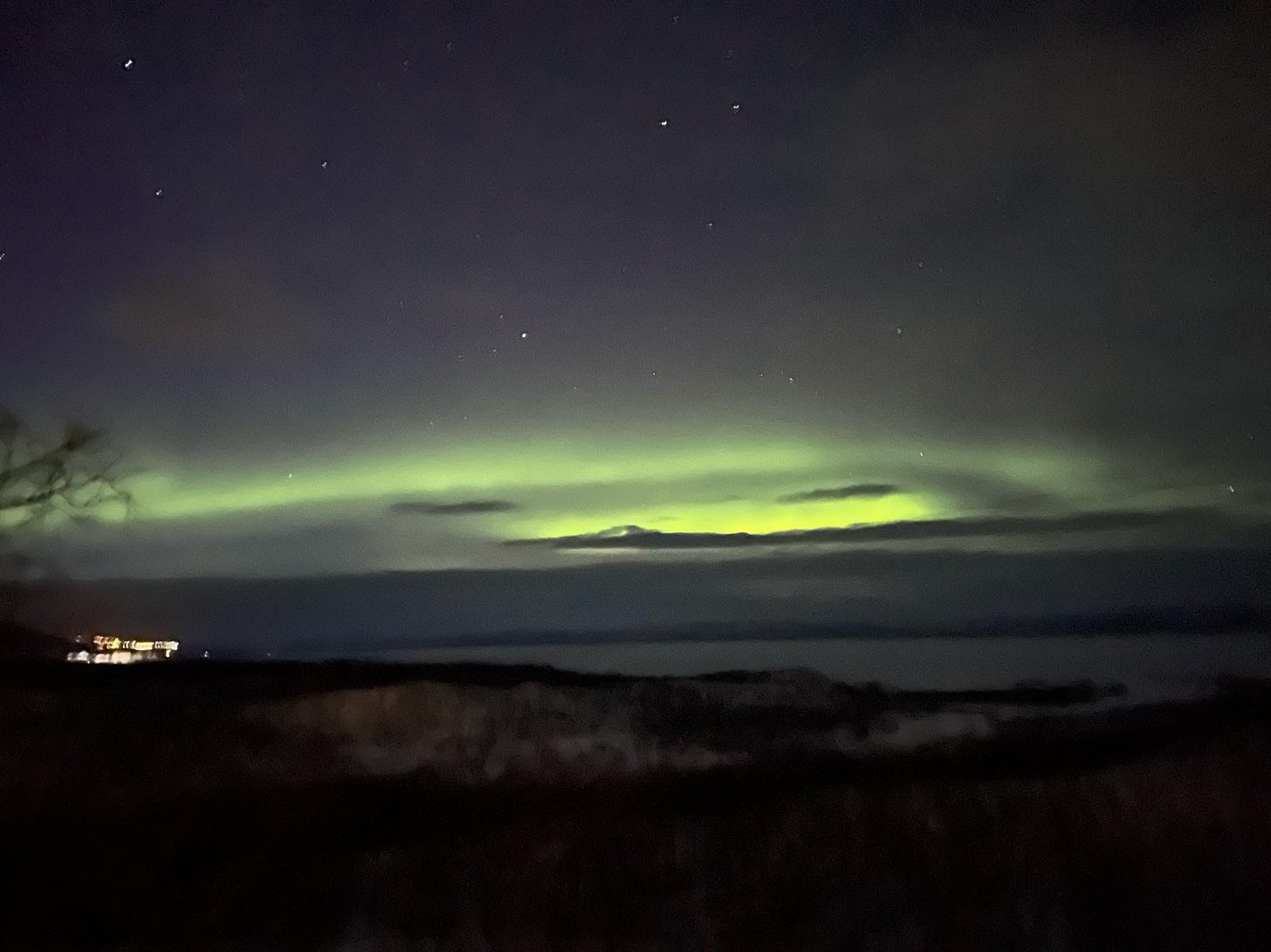By the time February arrives, days start to feel substantially longer in Sweden. But we know we’re still several months away until summer, so we need to be patient while also enjoying the outdoors and colder weather. Sometimes this colder weather means sickness, such that February is often called “vabruari”, indicating the paid VAB days that parents take off when their children get sick. (VAB is an acronym for vård av barn, which means ‘care of child.’) I have yet to take one of these, but parents are entitled up to 120 days each year per child. It’s a very generous benefit that enables either parent to care for sick children, which is so critical for staying in the workforce throughout the ups and downs of child illnesses. All that said, if the family is healthy and you’re ready to go beyond surviving, then it’s time to thrive in the Swedish winter.
To encourage getting outdoors, there is a week-long school break that takes place throughout the country in February, called sportlov. Apparently, sportlov originated during WWII when the government closed schools to save money on heating. When the children were not in school, the state offered state-funded outdoor activities instead. Seeing the benefits of this time off, the week continued beyond the wartime rationing and it’s now an annual tradition that takes place nationwide. In true Swedish form, the break does not happen during the same week for everyone. To ensure the slopes are not overcrowded, the Swedes have wisely divided up the country into different regions so that each region has its week off during weeks 7-11. As we live in southern Sweden, we get week 8 off for sportlov. Knowing that we’ll have the same week off each year makes for much better planning ahead!
As for what to do during that week off (and all the other weeks of winter), outdoor activities are the name of the game. One of my favorite expressions in Swedish is “det finns inget dåligt väder, bara dåliga kläder”, which means “there is no such thing as bad weather, only bad clothing.” With that, you can expect to be outside, no matter the conditions! One favorite activity, and what we also have done, is skiing – both alpine and cross-country. While there are few slopes (or snow) in southern Sweden where I live, it’s possible to get to them within a reasonable distance. Cross-country trails are much closer, within an hour or two, whereas alpine trails are four or more hours away. Last year, we travelled to Idre Fjäll, which was a 12-hour bus ride from our home. We went with a Friluftsfrämjandet group, so had the additional bonus of meeting fellow Swedes and learning from its amazing ski instructors. From what I have seen so far, any alpine resort will also include cross-country, so we have easy access to both.
In fact, Sweden has the biggest cross-country ski race in the world, called the Vasaloppet. It’s a 90-km race that takes place every year, and they are working toward 60,000 registrants in 2024. I watched it on television last year and it was absolutely amazing to see the lead racers sprinting all-out for 90 km. Not for the faint of heart! Separate from the ski-based activities, one can find many other winter sports to do throughout the winter, including ice hockey, ice skating, ice fishing, snow-shoeing, and curling!
(From the XC-trails in Idre Fjäll)
(XC skiing in Abisko)
While sports may not be for everyone, there are many other winter activities to enjoy during the snowy months. When we first arrived to Sweden in 2022, we were not yet aware of the sportlov traditions, so we went north to Kiruna in the Arctic Circle. My philosophy at that point was to do winter quickly after arrival, lest I be tired of the winter in future years (it turns out, this was not the case). Kiruna is where one can experience sport (of course), and also activities like dog sledding, the original Icehotel, and, of course, the Northern Lights. We did all of these, and more, while there. I highly recommend the Artic Circle!
(Ice sculptures from the Ice Hotel in Jukkasjäarvi, Sweden)
(Dog sledding near Jukkasjäarvi, Sweden)
(Truly a phenomenal experience to witness the Northern Lights in Abisko)
With winter being such a dominant force in Sweden, we are embracing the season and continuing to discover new skills in the process. This year, we’ll head to Hafjell in Norway, adding another country to our discovery list. In this case, we’ll be taking a train all the way, so that is a stark point of contrast with our experience in California. When living in San Francisco and Berkeley, we could drive to Tahoe, our nearest mountain. On a good day, it would take three hours. But at its worst, many more. I’ll never forget the 10-hour drive back from Tahoe to Berkeley due to blizzard/traffic conditions. The irony of going from palm trees to snow is something special to that place. But I did love the proximity. Taking it back further to my childhood where I grew up in Canada, the experience in Sweden is still quite different. I grew up in the prairies and it wasn’t possible to take a train to the mountains. While I did see the Northern Lights on several occasions, I recall the colors being much more white than the distinct greenish hues I witnessed in Abisko. It could be the latitude, or something else. But both experiences are equally memorable. There is something incredibly magical about seeing the dark skies come to dancing life. It’s something to add to your bucket list!










Thanks Shauna! Paid time off to care for children is impressive and in contrast!
It's been a joy to travel with you and the crew since you moved to Swede. Thank you for broadening our lives with your insights. Winter is beautiful.....